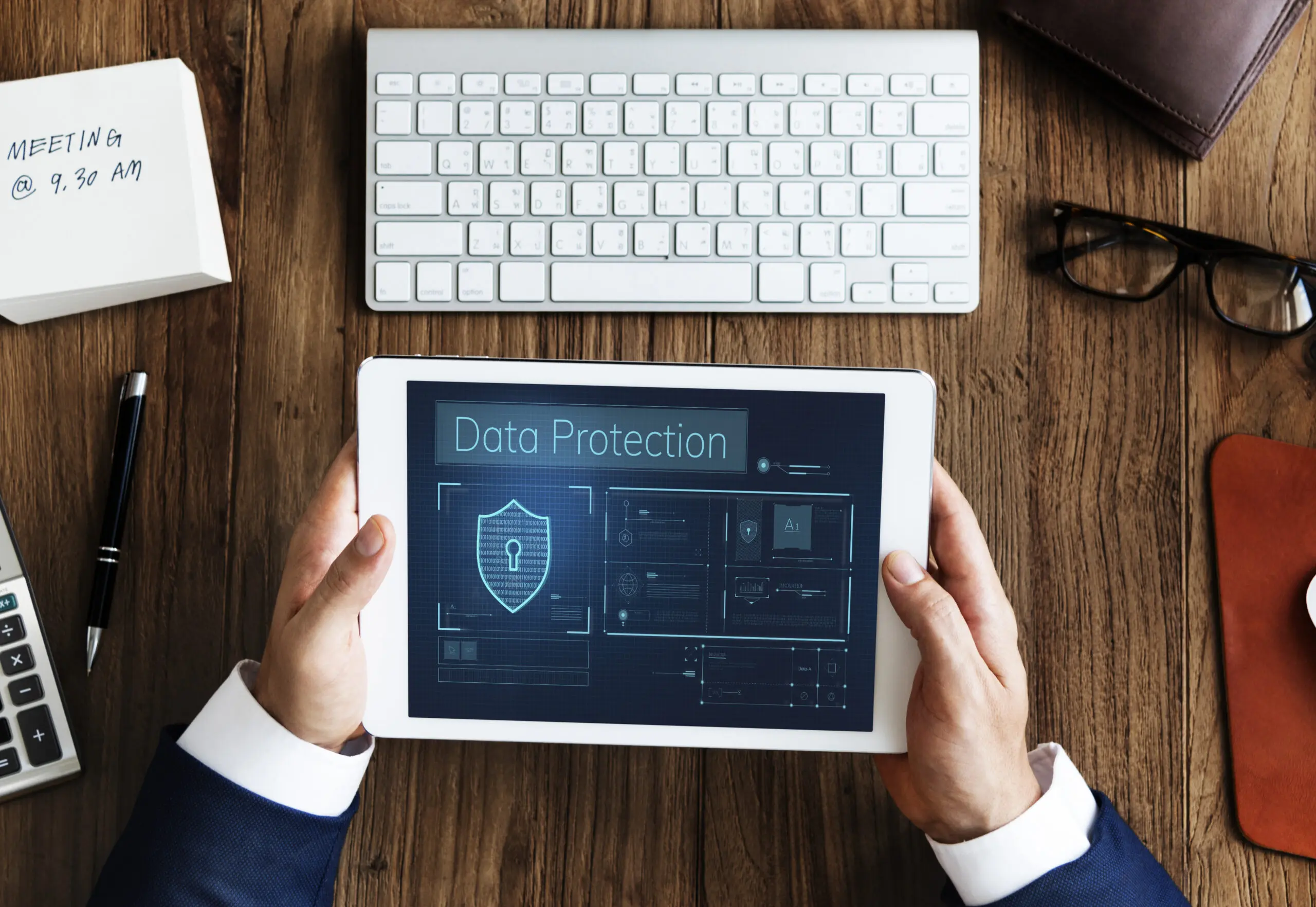Table of Contents
Brand protection is essential in today’s digital marketplace. Businesses operating online face growing risks, including counterfeit products, trademark infringement, and misleading information that can harm their reputation.
E-commerce and social media have made it easier for fraudulent actors to take advantage of brand names, misleading customers and reducing trust.
Neglecting brand protection can lead to major financial and reputational setbacks. Counterfeiting alone is expected to cost businesses over $4.2 trillion by 2025, and legal disputes over trademarks can be expensive.
A recent survey by Baden Bower found that 81% of brands believe strategic public relations played a crucial role in protecting their reputation after a crisis.
This proves how important proactive brand management is, especially when consumer trust is on the line.
When customers unknowingly buy fake products or fall victim to scams, they often lose trust in the original brand, making recovery difficult. PR for entrepreneurs helps rebuild trust by communicating transparency and authenticity to the public.
A well-planned brand protection strategy helps businesses maintain consumer confidence and protect revenue. This includes proactive monitoring, legal protections, and digital brand protection tools designed to detect and stop threats early.
Digital PR strengthens credibility by promoting accurate and positive information across media platforms.
Threats to brand integrity continue to evolve, making advanced protection methods more important than ever. The global market for brand protection software is projected to expand from $2.62 billion in 2024 to $5.05 billion by 2031.
Companies that invest in effective solutions now will be in a stronger position to defend their reputation and sustain long-term success.
What is Brand Protection?

Building a strong brand takes years, but counterfeiters and online fraud can destroy trust in an instant. Protecting a brand from these threats is essential for long-term success.
Amazon removed over 7 million counterfeit products in 2023, keeping customers and businesses safe. This large-scale crackdown highlights the increasing risks brands face online.
Brand protection includes strategies to prevent infringement, counterfeiting, and reputational damage.
Businesses use legal tools, technology, and digital monitoring to safeguard their brand identity and customer trust.
Key Elements of Brand Protection
Strong brand protection solutions involve legal protections, security measures, and proactive reputation management.
1. Trademark Protection
Trademarks secure a brand’s name, logo, and distinctive elements. Registering these assets prevents unauthorized use and strengthens brand identity.
2. Anti-Counterfeiting Measures
Counterfeit products harm sales, reputation, and customer safety. Businesses combat this issue through product serialization, authentication technology, and strict supply chain controls. Amazon’s recent efforts to eliminate millions of fake products show the scale of this problem.
3. Online Reputation Management
Misleading reviews, fake profiles, and misinformation weaken trust. Businesses track their online presence, address negative content, and take legal action when necessary.
4. Digital PR and Media Presence
Consistent media visibility builds credibility and trust. A strong brand engagement strategy increases positive exposure, helping customers recognize authentic products and services.
Brand Protection as a Business Strategy
Neglecting brand protection solutions puts revenue, reputation, and legal standing at risk. Counterfeits and brand impersonation can erode customer trust, leading to financial losses. Prioritizing protective strategies supports long-term business growth and stability.
Pro Tip: Create a brand protection task force within your company to monitor and address threats regularly.
Differences Between Brand Protection and Marketing
Marketing focuses on increasing brand awareness and customer interest, while brand protection strategies defend against risks that can harm credibility.
Combining strong security measures with a solid brand engagement plan ensures that customers interact with the authentic brand.
Shield Your Brand, Stay Ahead
Protect your reputation with expert PR strategies. Talk to us now!
Why Brand Protection Matters
A strong brand takes time to build, but without protection, it can be damaged overnight. Counterfeit products, trademark infringements, and online impersonation create serious risks for businesses.
To maintain credibility and long-term success, companies must invest in brand protection strategies.
Protecting Reputation and Customer Trust
Reputation influences consumer decisions. If counterfeit goods flood the market under a brand’s name, trust declines.
Digital brand protection helps businesses maintain their image by monitoring online platforms and taking action against unauthorized use.
Luxury brands such as Rolex and Louis Vuitton actively combat counterfeiting to prevent reputational damage. Without brand protection strategies in place, businesses risk losing customer confidence.
The Cost of Counterfeits and Trademark Infringement
Counterfeit goods account for nearly 3.3% of global trade, leading to significant revenue loss. Trademark infringement weakens brand identity, making it harder for companies to maintain their market position.
To reduce financial losses, businesses use:
- Trademark registration for legal protection.
- Online monitoring tools to detect fraudulent sellers.
- Security features such as watermarks and unique product identifiers.
Ignoring these steps allows counterfeiters to profit while harming legitimate businesses.
Digital Brand Protection and Online Integrity
Online platforms can expose brands to unauthorized use of their name, logo, or identity. Fake social media accounts and misleading ads can mislead customers. Protecting brand integrity online requires consistent monitoring and legal enforcement.
Some effective strategies include:
- Tracking brand mentions and product listings.
- Reporting unauthorized accounts or listings.
- Using PR reputation management to reinforce credibility.
A strong digital presence helps businesses maintain control over their brand image and customer perception.
Legal Risks and Compliance
Without proper legal protection, businesses may lose control over their brand. If another company registers a similar trademark, legal disputes can arise.
Preventative measures help companies avoid lawsuits, loss of exclusivity, and customer confusion.
Trademark protection, copyright enforcement, and legal monitoring should be part of every brand’s defense strategy.
Pro Tip: Conduct routine trademark audits to identify potential infringement before it becomes a legal issue.
Long-Term Value and Market Strength
A protected brand holds more value. Customers remain loyal to businesses they trust, and strong branding attracts new buyers. Companies take brand protection seriously by investing in legal safeguards, customer education, and security features.
Businesses that prioritize brand protection and solutions secure their reputation, revenue, and long-term growth.
How Does Brand Protection Work?
Protecting a brand is an ongoing effort that requires attention to multiple factors. Counterfeiters, online impersonators, and reputation threats are constant risks.
A well-planned defense includes legal protections, technology-driven monitoring, and strategic actions to maintain trust and credibility.
Proactive vs. Reactive Brand Protection
Brand protection follows two main strategies: proactive and reactive.
- Proactive measures include trademark registration, digital monitoring, and customer education. These steps help reduce risks before they become problems.
- Reactive measures involve responding to threats like counterfeit products, impersonation, or negative media coverage. This may include legal action, PR management, or shutting down fraudulent online activity.
Both strategies are necessary. Prevention limits exposure to risks, while reactive efforts help control damage when issues arise.
How Technology Strengthens Brand Protection
Technology plays a key role in brand protection solutions. AI and machine learning make it easier to detect and remove threats in real-time.
A 2025 analysis by Bolster AI highlights the importance of digital monitoring and enforcement in modern brand protection programs.
Their research shows that digital enforcement can disrupt fraudulent operations in minutes instead of months, reducing financial losses and safeguarding brand integrity.
Coordinating Legal, Marketing, and PR Teams
Successful brand protection requires cooperation across multiple departments.
- Legal teams handle trademarks, copyright issues, and lawsuits against counterfeiters.
- Marketing teams strengthen brand identity to reduce the impact of fakes and misinformation.
- PR teams manage brand perception and respond to negative media coverage when necessary.
A coordinated effort between these teams provides a stronger defense against threats.

Source: Mention
The graph indicates that 33% of respondents believe public relations is responsible for brand protection.
Adapting to New Risks
Threats to a brand evolve over time. Staying ahead requires regular monitoring of online brand protection risks and updating security measures.
Fraudulent websites, social media impersonation, and misleading advertisements continue to change, making it essential to track trends and adjust strategies accordingly.
Media’s Role in Brand Protection
A strong media presence helps control public perception. Positive news coverage, industry recognition, and proactive communication keep a brand’s image intact.
Key strategies include:
- Publishing content on counterfeit prevention and security efforts.
- Partnering with journalists to expose fraudulent sellers.
- Using social media to educate customers on brand authenticity.
- Learning how to get an article written about you in a reputable publication to highlight brand protection initiatives.
Managing negative media coverage effectively helps maintain credibility, ensuring that customers find reliable information instead of misleading content.
Secure Your Brand’s Reputation Now
Take control of your brand’s image before someone else does. Let’s build a stronger, untouchable presence today!
Digital Brand Protection Strategies
The Internet presents both opportunities and risks for businesses. While it helps brands grow, it also exposes them to counterfeiting, fraud, and reputation damage.
Digital brand protection helps businesses protect their name, reputation, and revenue. Here are key strategies to strengthen online security and credibility.
Monitor and Protect Your Digital Presence
Threats exist anywhere a brand is visible online. Counterfeit listings, impersonators, and unauthorized use of brand assets are common issues.
- Track Social Media Mentions: Set up alerts for brand mentions and check for unauthorized use of logos or product images.
- Scan Online Marketplaces: AI-powered tools can detect counterfeit listings on e-commerce platforms like Amazon and Alibaba.
- Use AI for Brand Protection: Machine learning helps identify fake websites, trademark violations, and fraudulent activity.
Ignoring these threats leads to lost revenue, brand damage, and declining customer trust.
Strengthen Cybersecurity to Safeguard Brand Assets
Brand security also depends on protecting digital assets, customer data, and intellectual property. A security breach damages trust and exposes sensitive information.
- Secure Websites: Implement HTTPS encryption, two-factor authentication, and frequent security updates.
- Defend Against Phishing and Impersonation: Cybercriminals often create fake brand emails. Teach employees and customers how to spot fraudulent messages.
- Protect Your Domain: Register multiple variations of your domain name to prevent cybersquatting.
Educate Customers to Spot Counterfeits
Counterfeit products hurt revenue and weaken customer confidence. Awareness efforts help buyers recognize authentic goods.
- Show Supply Chain Transparency: Share details about official retailers and verification methods.
- Run Customer Education Campaigns: Use blogs, emails, and social media to teach customers how to identify genuine products.
Informed buyers are less likely to purchase counterfeit goods and more likely to remain loyal.
Manage Reviews and Customer Feedback
Online reviews shape public perception. Addressing concerns and encouraging positive engagement improves a brand’s credibility.
- Respond to Negative Reviews Professionally: Acknowledge concerns and provide solutions promptly.
- Encourage Positive Reviews: Ask satisfied customers to share their experiences.
- Monitor Third-Party Review Sites: Sites like Trustpilot and Google Reviews influence purchasing decisions. Keep track of brand mentions.
Ignoring reviews allows negative opinions to spread unchecked.
Use PR and Media Placement to Strengthen Reputation
A well-planned PR strategy builds credibility and counters misinformation. Media features provide an additional layer of brand protection.
- Secure Features in Trusted Publications: Coverage in well-known media outlets enhances authority.
- Publish Thought Leadership Content: Case studies, expert insights, and brand stories reinforce trust.
- Announce Brand Protection Efforts: Use press releases to communicate actions taken against counterfeits and fraud.
A strong media placement strategy helps control public perception and keeps the brand in a favorable light.

Legal Aspects of Brand Protection
Trademarks
Trademarks protect essential brand elements, including:- Company names
- Logos and symbols
- Product names and taglines
- Register trademarks in all operating markets/
- Use monitoring tools to track unauthorized use.
- Take legal action when necessary.
Copyrights
Trademarks cover names and logos, but copyright laws protect creative materials such as advertisements, packaging, and website content. Unauthorized use of these assets can mislead customers and damage credibility. Disney is known for aggressively protecting its copyrighted material, from movie scripts to merchandise. Smaller businesses can use similar legal measures to prevent content theft.International Brand Protection
Brand protection strategies must consider international laws, as regulations vary between countries. Counterfeiting is a multibillion-dollar industry, and enforcement depends on local legal systems. Key Considerations for International Protection:- The Madrid Protocol simplifies global trademark registration.
- Local trademarks are necessary, as U.S. laws do not extend to other countries.
- Working with international legal teams helps businesses protect their rights abroad.
Online Threats
Domains serve as a business’s digital storefront, making domain theft a serious issue. Competitors or bad actors sometimes register similar domains to divert traffic or damage a brand’s reputation. How to Handle Cybersquatting:- Secure multiple domain variations (.com, .net, .org).
- Use the Uniform Domain-Name Dispute-Resolution Policy (UDRP) to reclaim domains.
- Monitor domain registrations for suspicious activity.
Legal Actions Against Infringers
Legal action is sometimes required when preventive measures fail. Common options include- Cease-and-desist letters: A formal warning to stop unauthorized use.
- Lawsuits: When infringement continues, legal action may be necessary.
- Customs enforcement: Registering trademarks with customs can prevent counterfeit imports.
Strengthening Legal Protection Through PR & Media
Public awareness supports brand protection efforts. Announcing legal victories through press releases or industry media reinforces a brand’s legitimacy and warns potential infringers. Ways to Use PR for Brand Protection:- Share legal updates through press releases.
- Publish articles about enforcement efforts.
- Work with industry influencers to highlight authenticity.
Secure Your Brand and Stay Ahead
Brand protection helps businesses defend their reputation, revenue, and customer trust. If you want to strengthen your credibility and maintain control of your brand image, it’s time to get on Forbes.
A strong media presence supports brand protection & solutions & strategies, helping businesses prevent counterfeits, trademark violations, and online scams. These risks continue to grow, but proactive steps can keep brands secure.
Threats change over time, making it essential to stay ahead. Digital monitoring, legal enforcement, and strategic media placement work best when combined.
A visible and well-protected brand builds trust, making it harder for bad actors to damage its reputation. Taking control of the narrative helps customers recognize and engage with the authentic business.
Brand security requires a structured plan that includes media exposure and legal safeguards.
PR agencies specialize in protecting reputations while elevating brands in the right spaces. Take the next step now and make sure your brand stays strong, trusted, and ahead of the competition.
Guaranteed Publicity for Your Brand
Get featured in top publications with our proven PR strategies






